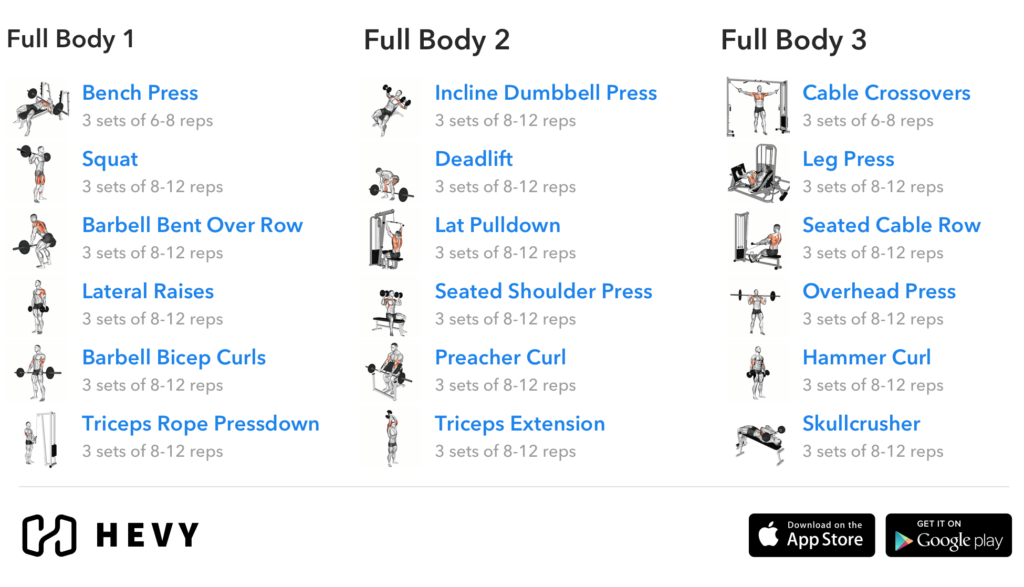
Ultimate 6 Exercises for Full Body Fitness
When it comes to achieving your fitness goals, a well-rounded workout routine is key. Incorporating exercises that target various muscle groups ensures you’re not only building strength but also improving overall fitness and mobility. In this article, we’ll delve into the ultimate six exercises for full-body fitness, providing insights into their benefits and how to perform them effectively.
1. Squats: Building Lower Body Strength
Squats are often hailed as the king of lower body exercises, and for good reason. They engage multiple muscle groups, including the quadriceps, hamstrings, glutes, and core, making them incredibly efficient for building lower body strength and power. Additionally, squats are functional movements that mimic everyday activities like sitting and standing, making them essential for improving overall mobility and stability.
To perform a squat correctly, stand with your feet shoulder-width apart, toes pointing slightly outward. Keep your chest up and back straight as you lower your hips back and down as if sitting into an imaginary chair. Aim to lower until your thighs are parallel to the ground, then drive through your heels to return to the starting position. Remember to engage your core throughout the movement and maintain proper form to avoid injury.
2. Deadlifts: Strengthening the Posterior Chain
Deadlifts primarily target the posterior chain, which includes the muscles of the lower back, glutes, and hamstrings. This compound exercise not only builds strength but also improves posture and reduces the risk of injury by strengthening the muscles responsible for maintaining proper alignment and stability.
To perform a deadlift, stand with your feet hip-width apart, toes pointing forward, and a barbell or set of dumbbells in front of you. Keeping your back straight and chest up, hinge at the hips and bend your knees slightly to grasp the weight with an overhand grip. Engage your core and drive through your heels as you stand up, keeping the weight close to your body throughout the movement. Lower the weight back down with control, maintaining proper form at all times.
3. Push-Ups: Building Upper Body Strength
Push-ups are a classic bodyweight exercise that targets the muscles of the chest, shoulders, triceps, and core. They can be performed anywhere with no equipment required, making them a convenient and effective addition to any workout routine.
Start in a high plank position with your hands shoulder-width apart and arms fully extended. Keep your body in a straight line from head to heels, engaging your core and glutes to maintain stability. Lower your body towards the ground by bending your elbows, keeping them close to your sides. Once your chest nearly touches the ground, push through your palms to return to the starting position. If traditional push-ups are too challenging, you can modify by performing them on your knees or against an elevated surface.
4. Pull-Ups: Enhancing Back and Arm Strength
Pull-ups are an excellent compound exercise that targets the muscles of the back, arms, and shoulders. While they can be challenging, mastering this movement provides a host of benefits, including increased upper body strength and muscle definition.
Start by gripping an overhead bar with your hands slightly wider than shoulder-width apart and palms facing away from you. Hang with your arms fully extended, engaging your core and avoiding swinging or kipping movements. Pull your body up towards the bar by engaging your back muscles and bending your elbows, aiming to bring your chin above the bar. Lower yourself back down with control, fully extending your arms before beginning the next repetition. If you’re unable to perform a full pull-up, you can use resistance bands or an assisted pull-up machine to gradually build strength.
5. Lunges: Improving Lower Body Stability
Lunges are a versatile exercise that targets the quadriceps, hamstrings, glutes, and calves while also improving balance and stability. They can be performed with bodyweight alone or by adding resistance with dumbbells or a barbell for added intensity.
To perform a lunge, start by standing tall with your feet hip-width apart. Take a step forward with one foot, lowering your body until both knees are bent at a 90-degree angle, with your front thigh parallel to the ground. Keep your chest up and shoulders back, and ensure your front knee stays aligned with your ankle, not extending past your toes. Push through your front heel to return to the starting position, then repeat on the opposite side. Alternating lunges or performing walking lunges can add variety and challenge to your workout routine.
6. Planks: Strengthening the Core
Planks are a foundational exercise for building core strength and stability, targeting the muscles of the abdominals, obliques, and lower back. They also engage muscles throughout the entire body, making them an effective full-body exercise for improving overall strength and posture.
Start in a forearm plank position with your elbows directly beneath your shoulders and your body in a straight line from head to heels. Engage your core and glutes to maintain stability, avoiding sagging or lifting your hips too high. Hold the position for as long as possible while maintaining proper form, aiming to build up to 30-60 seconds or more over time. To add variety, you can perform side planks to target the obliques or incorporate plank variations such as plank shoulder taps or plank leg lifts.
Incorporating these six exercises into your workout routine can help you achieve a balanced and effective full-body workout. Remember to prioritize proper form, gradually increase intensity and resistance as you progress, and listen to your body to avoid overtraining or injury. With consistency and dedication, you’ll be well on your way to achieving your fitness goals and enjoying the benefits of improved strength, mobility, and overall health. Read more about 6 exercises full body workout










